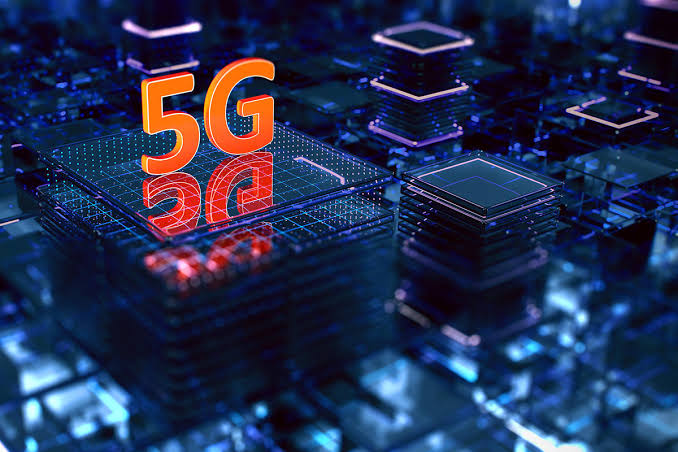OPINION: Africa Still On The Outskirts Of 5G Connectivity

With less than one percent coverage of the Fifth Generation (5G) networks in Sub Sahara Africa,there are indications that services on this prized telecommunications technology is still a distant cry.
So far,no fewer than 229 countries have implemented the technology across the globe but only few African countries including Nigeria appear to have initiated moves to implement 5G in concrete terms.
Nigeria has three licencees for 5G but only MTN has shown serious progress in its implementation while Mafab Communications and Airtel are in various stages of implementing and activating their networks.
In general terms,5G remains a pipe dream as countries like Ethiopia and Ghana are in a hurry to actualise services.South Africa,Botswana,Seychelles,Zimbabwe,Madagascar,Lesotho and Egypt have commercial 5G services while,Ghana,Uganda,Senegal and Gabon are warming up for commercial launch.
Global System of Mobile Communications Association (GSMA) rose from its yearly Mobile World Congress (MWC) in Barcelona,Spain last week with a not too exciting verdict on 5G coverage in Africa despite the rising profile of its implementation elsewhere in the global communities.
GSMA says 5G connections would double over the next two years, with expedited technological innovations and new network deployments in more than 30 countries in 2023 alone. Of the new networks to be deployed in 2023, it is expected that 15 will be 5G Standalone networks.
The forecasts from GSMA Intelligence, announced during Mobile World Congress (MWC) Barcelona 2023, point to a significant period of growth in terms of mobile subscribers and enterprise adoption.
GSMA, which represents the interests of mobile operators worldwide, uniting over 750 operators with nearly 400 companies in the broader mobile ecosystem, noted that consumer connections surpassed one billion at the end of 2022 and would increase to around 1.5 billion this year – before reaching two billion by the end of 2025. This momentum confirms 5G as the fastest generational roll-out, when compared to 3G and 4G.
“As at January 2023, there were 229 commercial 5G networks globally and over 700 5G-smartphone models available to users. GSMA disclosed that growth would also come from key markets within Asian Pacific (APAC)and Latin America (LATAM) such as Brazil and India, which have recently launched 5G networks.”
GSMA noted that India would be especially significant, with the expansion of services from Airtel and Jio in 2023 and expected to be pivotal to the region’s ongoing adoption.
GSMA Intelligence predicts there will be four 5G networks in India by the end of 2025, accounting for 145 million additional users.
“Many of the new 5G markets scheduled to launch networks in 2023 are in developing regions across Africa – including Ethiopia and Ghana – and Asia. Today, 5G adoption in the sub-Saharan region sits below one per cent but will reach over four per cent by 2025 and 16 per cent in 2030, largely thanks to a concerted effort from industry and government organisations to provide connectivity to citizens” according to Head of GSMA Intelligence, Peter Jarich, adding “Until now, 5G adoption has been driven by relatively mature markets and consumer use cases like enhanced mobile broadband, but that’s changing. We’re now entering a second wave for 5G that will see the technology engage a diverse set of new markets and audiences.”
“The extension to new use cases and markets will challenge the mobile ecosystem to prove that 5G truly is flexible enough to meet these diverse demands in a way that’s both inclusive and innovative” he explained.
In terms of country coverage, Chile has 15.4% while France(15.9%), Netherlands(16.1%),Qatar(16.4%).Singapore(18.1%),Bulgaria(20.8%)Thailand(21.2%),Croatia(21.5%),Hong Kong (SAR China)22.2%) and United States has 25.2% accordingly.
Taiwan has 27.2% while Saudi Arabiahas 28.5% and South Korea has 31.3 % in that order.
The GSMA yearly Global Mobile Economy Report, states that: “5G will overtake 4G in 2029 to become the dominant mobile technology, with 5G adoption at over 85% in the top 5G markets by 2030.”
Global 5G connections will surpass five billion by the end of the decade, with the industry on track to hit 1.5 billion connections in 2023.”
The report says 5G will add almost $1 trillion to the global economy in 2030 and benefit every sector, with the services (46%) and manufacturing (33%) sectors deriving the most value; the mobile sector’s economic contribution will exceed $6 trillion by 2030.
The majority of operators expect private wireless networks to account for up to 20% of their total enterprise revenues, driven by improvements in 5G capabilities.
Meta verse momentum continues to grow, in tandem with advancements in enabling technologies like 5G and Artificial Intelligence (AI).
There are manifest 5G benefits and challenges.For instance,5G aims to support increasing capacity demands and, compared to 4G/LTE, the average download speeds of 5G were over five times faster in all markets.
5G technology will allow for easier streaming of high-definition media in densely populated areas or when out of reach of Wi-Fi hotspots.
Other potential benefits include integrated management of the vast amount of connected devices in a smart society, lower cost, lower battery consumption, lower latency, and improved support of device-to-device communication.
Through these capacities, 5G is expected to advance machine-based, internet of things (IOT) functionalities such as self-driving cars and smart factories.
By 2030, the economic impact of 5G is expected to reach 227 billion U.S. dollars in the manufacturing industry alone, provided mostly by mid-band 5G. In the same year, mid-band 5G is expected to comprise between 0.35 and 0.51 percent of total GDP, depending on the region.
While 5G remains the undeniable future of telecommunications, its promises of massive machine-type communication and lower latency come mainly from standalone 5G, whereas most telecommunication companies deploying 5G networks have built on existing 4G/LTE infrastructure, known as non-standalone (NSA) 5G, for easier and faster rollouts.
5G launches have therefore decreased since 2020, likely due to the expensive set-up costs for SA 5G on top of the harsh economic downturn in 2022. Despite these,5G rollout continues, and all but one of the 5G rollout announced for 2023 are standalone.






